
- Home
- India
- World
- Premium
- THE FEDERAL SPECIAL
- Analysis
- States
- Perspective
- Videos
- Sports
- Education
- Entertainment
- Elections
- Features
- Health
- Business
- Series
- In memoriam: Sheikh Mujibur Rahman
- Bishnoi's Men
- NEET TANGLE
- Economy Series
- Earth Day
- Kashmir’s Frozen Turbulence
- India@75
- The legend of Ramjanmabhoomi
- Liberalisation@30
- How to tame a dragon
- Celebrating biodiversity
- Farm Matters
- 50 days of solitude
- Bringing Migrants Home
- Budget 2020
- Jharkhand Votes
- The Federal Investigates
- The Federal Impact
- Vanishing Sand
- Gandhi @ 150
- Andhra Today
- Field report
- Operation Gulmarg
- Pandemic @1 Mn in India
- The Federal Year-End
- The Zero Year
- Science
- Brand studio
- Newsletter
- Elections 2024
- Events
- Home
- IndiaIndia
- World
- Analysis
- StatesStates
- PerspectivePerspective
- VideosVideos
- Sports
- Education
- Entertainment
- ElectionsElections
- Features
- Health
- BusinessBusiness
- Premium
- Loading...
Premium - Events
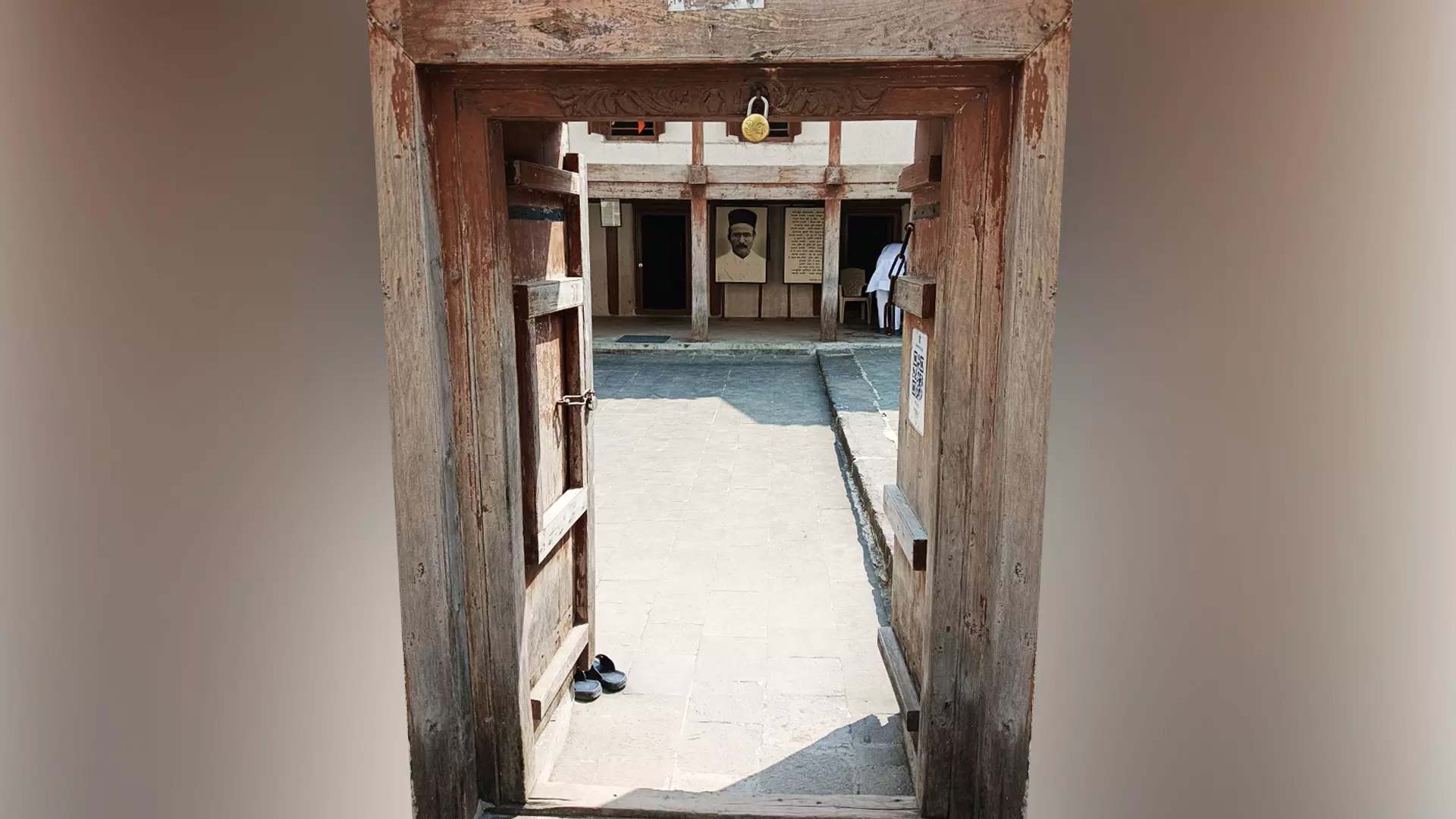
Vinayak Damodar Savarkar (1883-1966) was just one among the many names in the pages of history that was hardly mentioned until a couple of decades ago. The first major discussion on the person happened in 2003 when, despite strong protests by the opposition parties, a portrait of Savarkar was unveiled in the Central Hall of Parliament by President APJ Abdul Kalam. Despite the efforts of...
Vinayak Damodar Savarkar (1883-1966) was just one among the many names in the pages of history that was hardly mentioned until a couple of decades ago. The first major discussion on the person happened in 2003 when, despite strong protests by the opposition parties, a portrait of Savarkar was unveiled in the Central Hall of Parliament by President APJ Abdul Kalam. Despite the efforts of BJP leader LK Advani — who reintroduced Savarkar’s ideology to the political space of India — for nearly a decade after that controversy, Savarkar gained little traction, apart from being pulled out from the pages of history and being assigned a ‘place’ in Indian Parliament.
Another 10 years in between, and Savarkar is everywhere. He is the protagonist of movies and books, he is the subject of debates and a subject being studied in colleges.
With the emergence of ‘Hindutva’, the core ideologies of Savarkar are back in the reckoning. If one looks at the number of visitors who flock to ‘Savarkar Wada’ in Bhagur (18 km from Nashik town) where Savarkar was born, one will know how the transformation took place. With special photographs, letters, paintings and portraits, Savarkar Wada was restored by the Maharashtra state government in 2017.
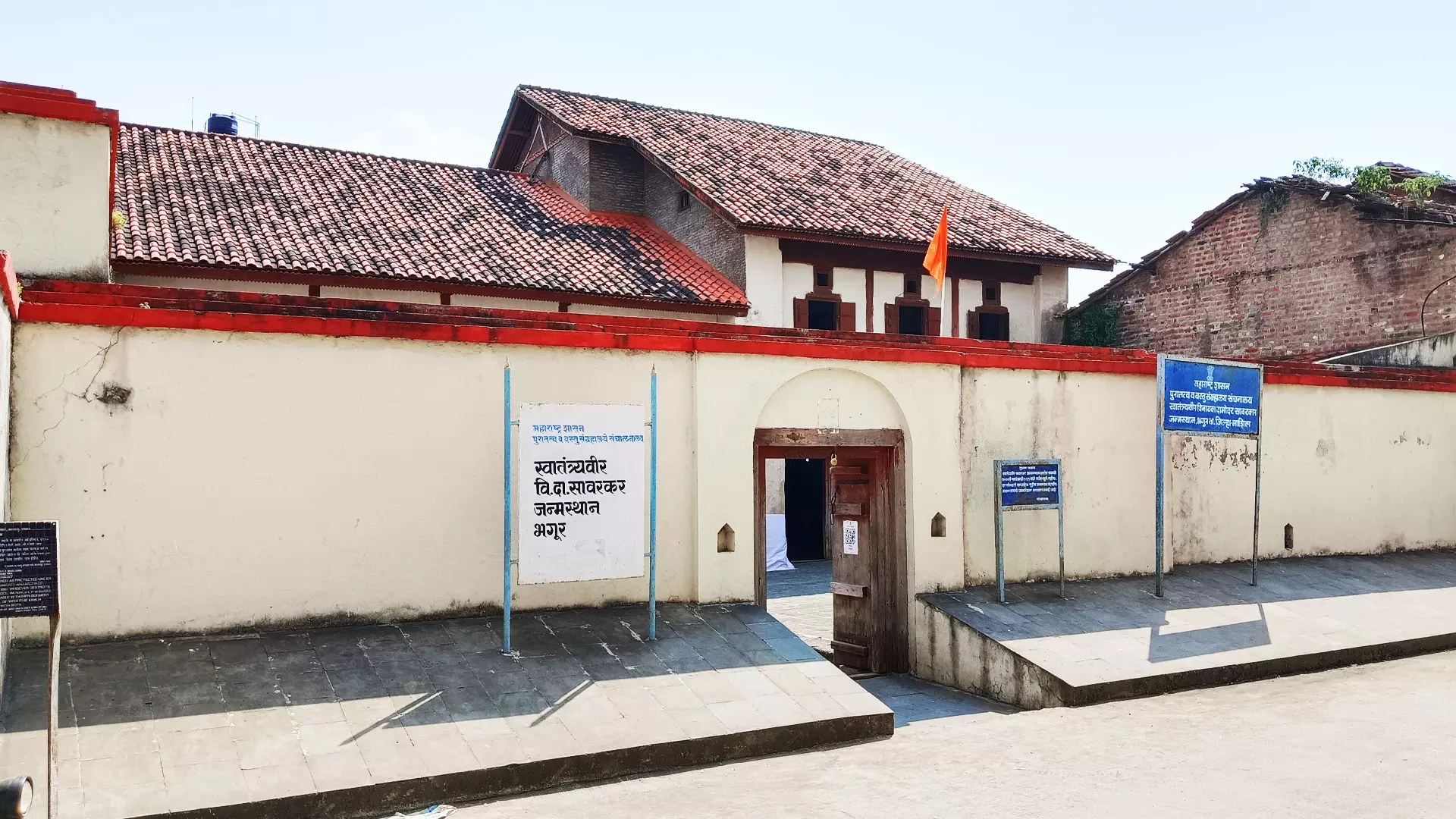
Bhagur was the place where Savarkar first experienced the spark of social revolution.
The house stands testimony to what Savarkar preached during his life time. You may agree with Savarkar’s ideology or not, but you will witness the unending struggles of a man to save his country and his people on his own terms in the house. “It was after visiting Savarkar Wada that I realised his role as a freedom fighter and a revolutionary,” said S Ashutosh, a history student. “We give too much importance to Mahatma Gandhi and Jawaharlal Nehru as freedom fighters. There are many freedom fighters who are sidelined mainly because of the Gandhi-Jawaharlal image. A historic search is inevitable to find out the truth and that’s what I am doing now,” he added.
Ideology at times takes its own course. There was an underground cave-like structure adjacent to the main hall of the house with steps which according to many was a route to escape if the British police arrived. Some visitors open the wooden cover and get a couple of steps down to see the underground tunnel. Was Savarkar scared of the British? “He was never scared of anyone. He was a strong man with great political willpower. At the same time, you have to fight to save your country. Getting into the hands of the British is stupidity, so all political leaders used escape routes like this. It was natural those days,” said Krishna Kanth, a retired history teacher based in Mumbai.
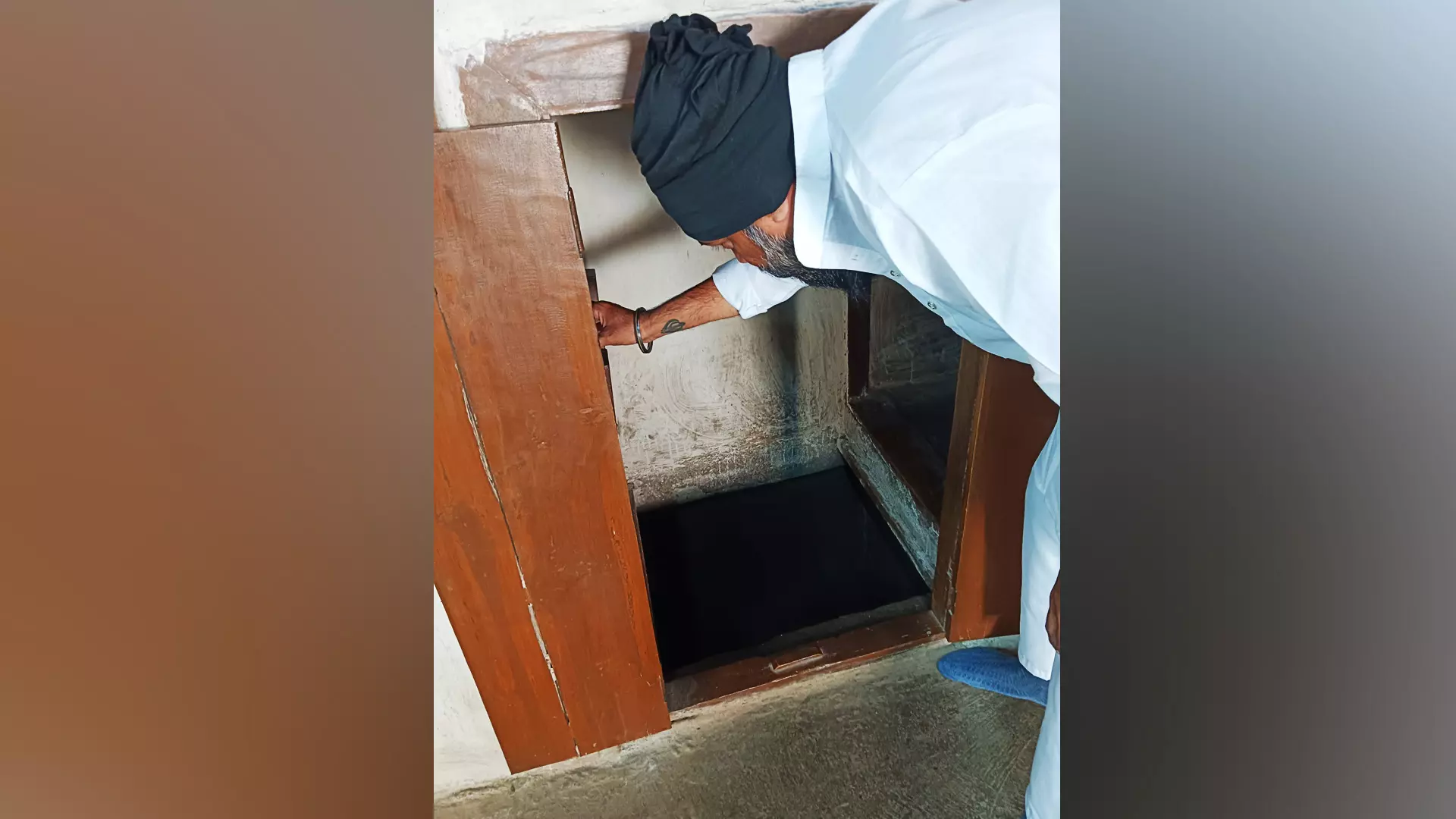
There was an underground cave-like structure adjacent to the main hall of the house with steps which according to many was a route to escape if the British police arrived.
Vinayak Damodar Savarkar was born on May 28, 1883, in Bhagur, a village near Nashik. His parents, Damodarpant and Radhabai belonged to a middle-class family. He joined the village school at the age of six. “Vinayak grew up listening to passages read out by his father from the epics Mahabharata and Ramayana and Ballads and Bakhars on Maharana Pratap. Chhatrapati Shivaji and the Peshwas. He was a voracious reader and read any book or newspaper from cover to cover, page to page. An inborn genius that he was, Savarkar had a rare talent in poetry and his poems were published by well-known newspapers when he was hardly ten. Even as a young boy, Vinayak was very conscious of the sufferings of people,” write T Balasubramanian, teaching assistant, Department of History, Alagappa University (Karaikudi) and V Venkatraman, head, PG and Research Centre in History, Rajapalayam Raju’s College, in their paper titled ‘Vinayak Damodar Savarkar, the Vibrant Nationalist of India’, published in the South Indian Journal of Library and Information Science.
As a social reformer, Savarkar built Patit Pavan Mandir in the Ratnagiri district to allow entry to all Hindus, including the Dalits. He wanted the rigid caste system to be thrown into the dustbins of history. Bhagur was the place where Savarkar first experienced the spark of social revolution. “Savarkar wanted to break away from caste-based vocational rigidity and encourage persons to pursue any vocation of their choice based on aptitude and ability. In the absence of motivation of competition, or lack of aptitude, Savarkar believed, “merely following what one’s father did, will make one both complacent and unproductive”. Savarkar wanted to break away from the taboo on inter-caste dining. He said, ‘Religion is in the heart, the soul, the spirit; not the stomach!’ He also promoted inter-caste marriage,” said T Balasubramanian, and V Venkatraman.
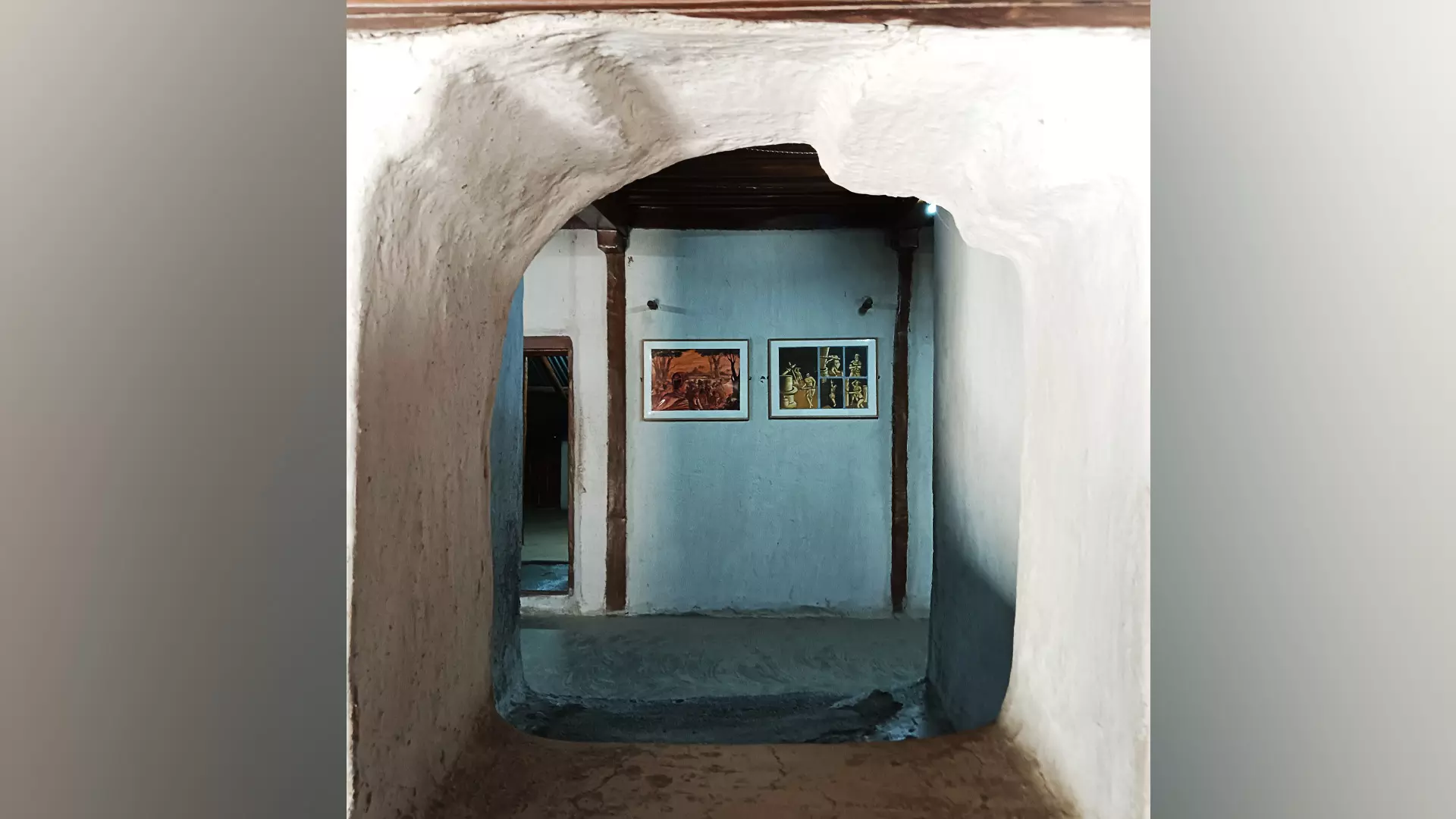
The Savarkar Wada attains great significance, because it was here that Savarkar first realised his role. Even as a boy, Savarkar could understand the sufferings of people around him. There was famine, plague and the brutal treatment from British colonists. “In such an atmosphere, the assassination of two British Plague Commissioners by the Chapekar brothers in Poona on June 22, 1897, and the subsequent execution of Damodarpant Chapekar disturbed the young Savarkar. He took a vow in front of Goddess Durga, of sacrificing his nearest and dearest, to fulfil the incomplete mission of the martyred Chapekar. He vowed to drive out the British from his Motherland and to make her free and great once again,” says The house stands testimony to what Savarkar preached during his life time., a booklet published by the Lok Sabha Secretariat containing the profile of Savarkar and some select photographs when the President unveiled his portrait in the Parliament House in 2003.
The Savarkar Wada has rare photographs of historic importance. Even though the house has been renovated, old photographs of the house were displayed at a special stand. They will give an idea about the original house where Savarkar was born. Asked what prompted him to visit Savarkar Wada, Tejas Ganesh Gosavi said, “We find our roots while visiting places like this. They connect us to the past. History allows us to feel like we are part of something much bigger. It humbles us while inexplicably making us feel stronger, because we come from a long line of survivors, and special, because we are part of this vast chain of humanity.” Gosavi said he was grateful to know more about Savarkar and the role he played.
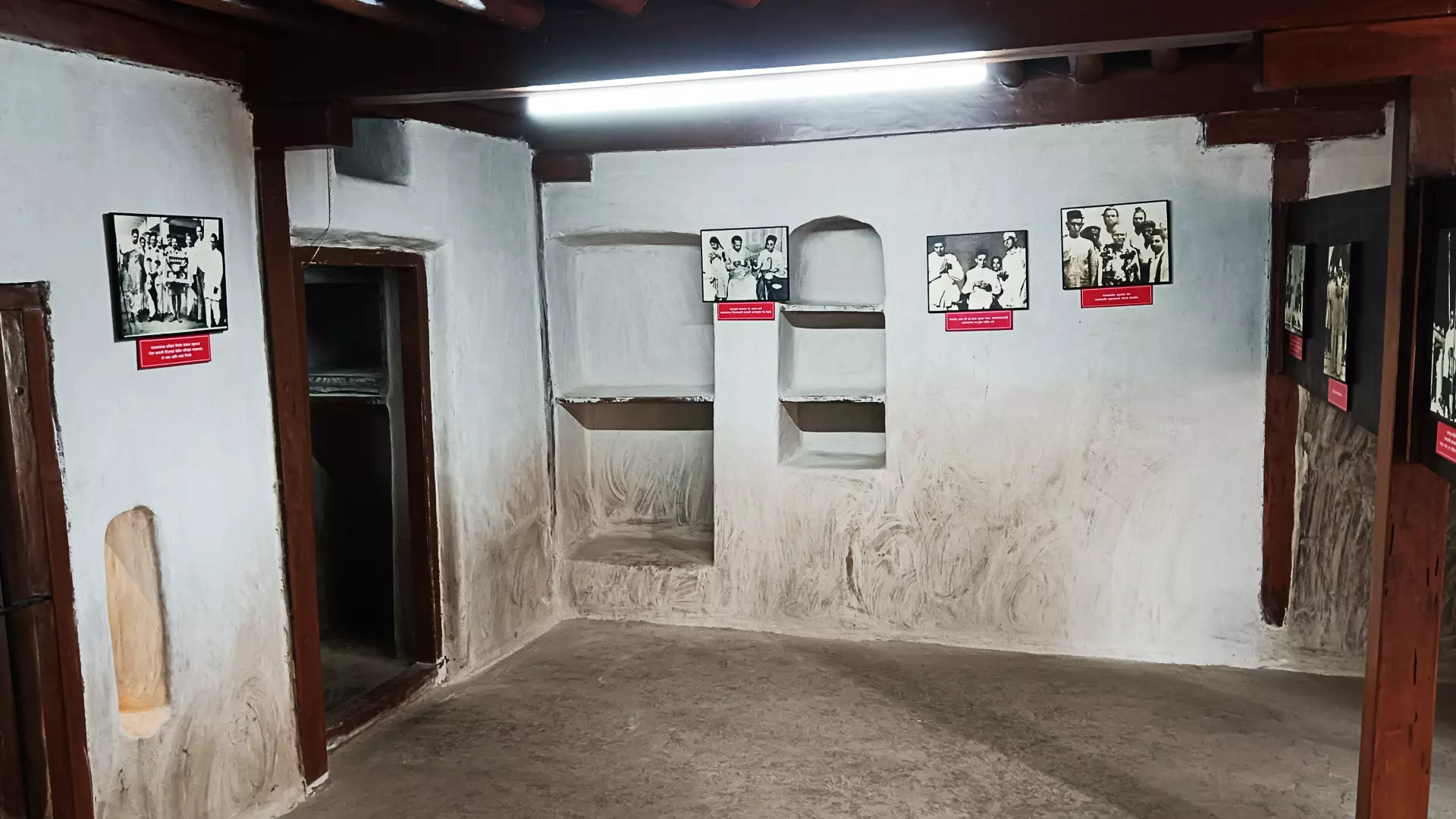
The Savarkar Wada has rare photographs of historic importance. Even though the house has been renovated, old photographs of the house were displayed at a special stand.
“The house has been maintained well, with rare photographs and paper clippings. It’s a great experience for a history student like me to learn more about Savarkar, particularly how he spent his early days,” said Gosavi, who is pursuing PhD in political Science and International Relations at Jawaharlal Nehru University, New Delhi.
If you look at the political history of India, you will see that the ideologies of Savarkar have resurfaced today as never before. The transformation of Savarkar, however, was not an overnight affair, according to its caretaker Manoj Kumar. “We get at least 200 visitors from various parts of the state as well as the nation. Even we get visitors from abroad. Today, people know more about Savarkar and the role he played in India’s independence. I think that’s the reason why his ideas are getting more popular today,” he said.

